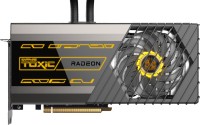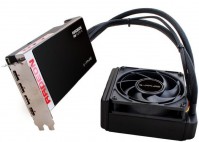Graphics Cards Sapphire series Nitro+ (TOP)
prices on 11 modelsSapphire Nitro+
The main hit for several years remained the Nitro + models based on the Polaris core - RX 470/480 and the RX 570/580 that replaced them. And although the GeForce 1050 was considered the go-to graphics card at the same time, many gamers considered the Nitro+ version of the RX 580 to be more attractive, which was one of the fastest, if not the fastest, variation of this graphics card. Overclocking aside, Nitro+ models have always been lauded for their build quality, affordable pricing, and ability to focus on what matters most. That is why they are in demand even three years after the release.
However, the lineup is based on more modern Radeon models based on the RDNA and RDNA 2 architectures, between which RX Vega accelerators, forgotten by everyone, occasionally come across. These cards are built with 2K and 4K gaming in mind, and can fully fit into the big leagues of video accelerators. At the same time, Sapphire engineers remained true to themselves and continue to make old-school devices that do not care about modern trends.
 |
For example, instead of a fashionable ARGB backlight or a designer casing, the conditional NITRO + RX 6900 XT is equipped with a dual BIOS with a switch between quiet and performant operation, an additional power connector, a modified printed circuit board and a three-slot Cooling system, which was completely redesigned for the needs of a hot chip. Weirdly, core overclocking out of the box isn't as impressive as previous Nitro+ models. The increase in frequency relative to the claimed nominal value is 5%.
Therefore, the Nitro+ series models are usually chosen by practical gamers who need an optimal graphics card in terms of performance, equipment and reliability. They do an excellent job of cooling the traditionally hot Radeon chips, while they practically do not make noise and do not need manual overclocking, since they work almost to the limit out of the box.





